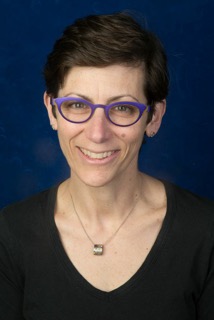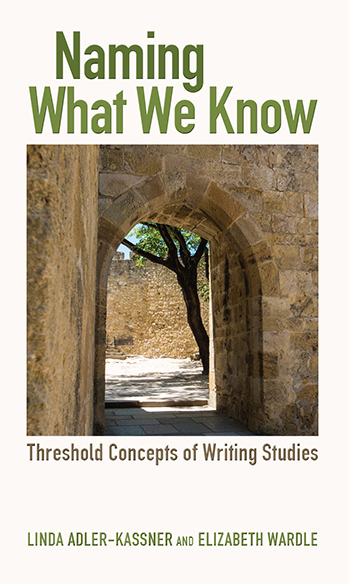
Exploring the Known Word


A new book co-edited by a UC Santa Barbara professor has, for the first time, described the foundational concepts of the discipline of writing studies. A collaboration of 33 scholars, “Naming What We Know: Threshold Concepts of Writing Studies” (Utah State University Press, 2015) defines 37 “threshold concepts” of writing studies and examines how educators might use them.
Threshold concepts are those ideas that form the essential underpinnings of disciplines — the ideas that lead learners to light bulb moments when they are able to understand and apply core principles in new, deeper ways.
The book was edited by Linda Adler-Kassner, a professor of writing studies at UCSB and associate dean in the Division of Undergraduate Education, and Elizabeth Wardle, a professor of writing and rhetoric at the University of Central Florida.
“There is no collection like this on threshold concepts of a discipline,” Adler-Kassner said. “There are people who have done research identifying threshold concepts within their disciplines, but not in the collective way we did in this book.”
The theory of threshold concepts emerged from research into learning in the early 2000s conducted by professors Jan Meyer and Ray Land of Durham University in northeast England.
According to Adler-Kassner and her colleagues, the foundational threshold concept of writing studies is the idea that writing is a subject of study and an activity. “Writing as an activity is something that lots of people have a deep interest in,” Adler-Kassner noted. “Some of those people include researchers, teachers, students, parents, policymakers and legislators. So writing is always at the center of discussion about learning and education in the United States.
“But it’s less often considered as a subject of study,” she noted. “For students, learning to study writing is central to becoming a flexible writer, one who can analyze and meet writing expectations in different disciplines, careers and community settings.” For policy makers and others, realizing that students need to learn to study writing in this way is also critical, she said.
“Naming What We Know” began as a wiki discussion led by Adler-Kassner and Wardle. It led to the identification of 37 threshold concepts in writing studies that include five major concepts and 32 subconcepts. Among the major concepts: Writing is a social and rhetorical activity; writing speaks to situations and contexts through recognizable forms; writing enacts and creates identities and ideologies; all writers have more to learn; and writing is always a cognitive activity. Essays in the second half of the book discuss ways threshold concepts can be used in education.
“We know a great deal about writing based on 60-plus years of research into writing and writing development and writing learning,” Adler-Kassner explained. “We wanted to both provide a way to bring together some of that knowledge — and threshold concepts is a very useful way to do that — and facilitate the discussion about that knowledge within our discipline and how we draw on it to have a dialog with others outside our discipline who have this deep interest in what we do.”
Adler-Kassner added that the threshold concepts framework could help redefine students’ perspectives on education. By understanding that these concepts exist, students can learn to approach education with the intent of learning to identify threshold concepts — ways of thinking and seeing — within and across disciplines. Doing so will help them to adapt their learning strategies and styles based on the disciplinary context. It’s a process that will need the engagement of students and faculty alike, and one that has been a focus of her work.
“I’ve talked a lot with faculty across campus about what their threshold concepts are in their disciplines and how those play out in their teaching and the work that they do with students,” she said. “How do they make them explicit? How do they work? What do we need for faculty members to see and do? It’s a way to process collectively how this shapes what our UC Santa Barbara experience looks like.”
In one book chapter, “Extending the Invitation: Threshold Concepts, Professional Development, and Outreach,” Adler-Kassner teamed with John Majewski, a professor of history at UCSB and interim dean of the humanities and fine arts division of the campus’s College of Letters and Science, to discuss ways to engage faculty with the theory.
“It’s really fun for faculty to think about these questions,” Adler-Kassner said. “They’re very interesting and they’re very important — because when we think about what a successful learner looks like, they look like somebody who can see through and live the threshold concepts of our disciplines. The more we can make those threshold concepts explicit for ourselves and our students, the more we enable students to be successful.”



